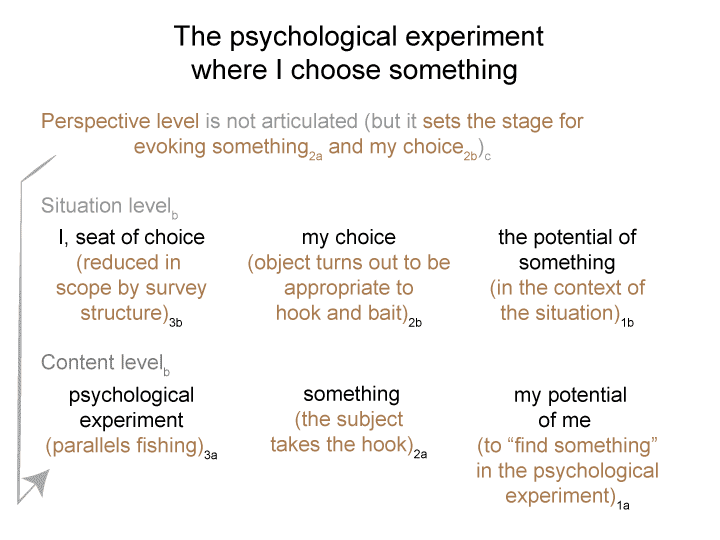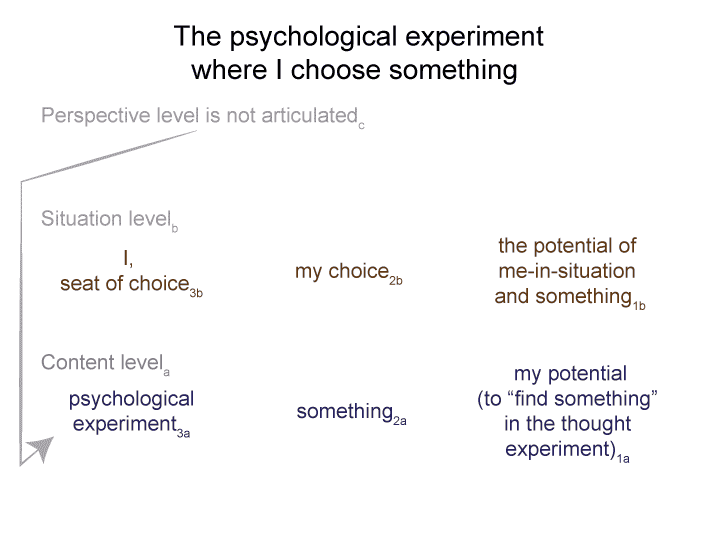Monthly Archives: August 2019
Man and Sin by Piet Schoonenberg (1964) 2.3 XZ
Summary of text [comment] pages 87 and 88
[In social science survey experiments, the bait is the thought experiement3a itself. The choice in the survey is the catch.
The bait inspires an upwelling in ‘the potential in me (the subject in the investigation)1a’. That upwelling tries to ‘deal with’ the bait.
Something2a emerges from and situates that upwelling.
Something2a may be an answer. But, that answer may not fit a survey question where the respondent gives a number between 1 and 51b. Something2a depends on the thought experiment3a calling it into being. My choice2b depends on the situationb.]
Man and Sin by Piet Schoonenberg (1964) 2.3 XY
[The ‘fisherman3c’ is the perspective level.
The ‘hook3a’ is the thought experiment.
Yes, even psychologists are ‘fishers of ‘men”.
Yet, they know not what they do.]
Man and Sin by Piet Schoonenberg (1964) 2.3 XX
[Sensible construction is characteristic of the social sciences.
In sensible construction, the perspective level is never challenged (unless, of course, something breaks).]
Man and Sin by Piet Schoonenberg (1964) 2.3 XW
[The subject is not aware of the experimentalist’s perspective.
Often, neither is the investigator.
This lack of awareness does not fit the label ‘bias’.
All surveys share the same relational structure. Even a researcher who carefully tries to eliminate biases cannot eliminate this feature.]
Man and Sin by Piet Schoonenberg (1964) 2.3 XV
Summary of text [comment] pages 86 and 87
[How is the psychological experiment, say a survey, like fishing?
Every something2a, that emerges from and situates the potential of the subject under investigation1b, has a hook to a thought experiment3a. That thought experiment3a reflects a perspectivec.]
Man and Sin by Piet Schoonenberg (1964) 2.3 XT
[Consider the discipline of experimental psychology.
Every psychological experiment where the subject chooses something exhibits this two-level interscope.
The experiment investigates the situational nested form:
I, seat of choice3b( my choice2b( potential of something1b))
However, the experimentalists inject a perspective into the adjacent and lower level, as content.
The name ‘thought experiment3a’ seems appropriate. Does it not?]
Man and Sin by Piet Schoonenberg (1964) 2.3 XS
Summary of text [comment] pages 86 and 87
[What is this thought experiment3a or mirror of the world3a? ]
Man and Sin by Piet Schoonenberg (1964) 2.3 XR
Summary of text [comment] pages 86 and 87
[I, seat of choice3b, virtually situates the mirror of the world3a.]


